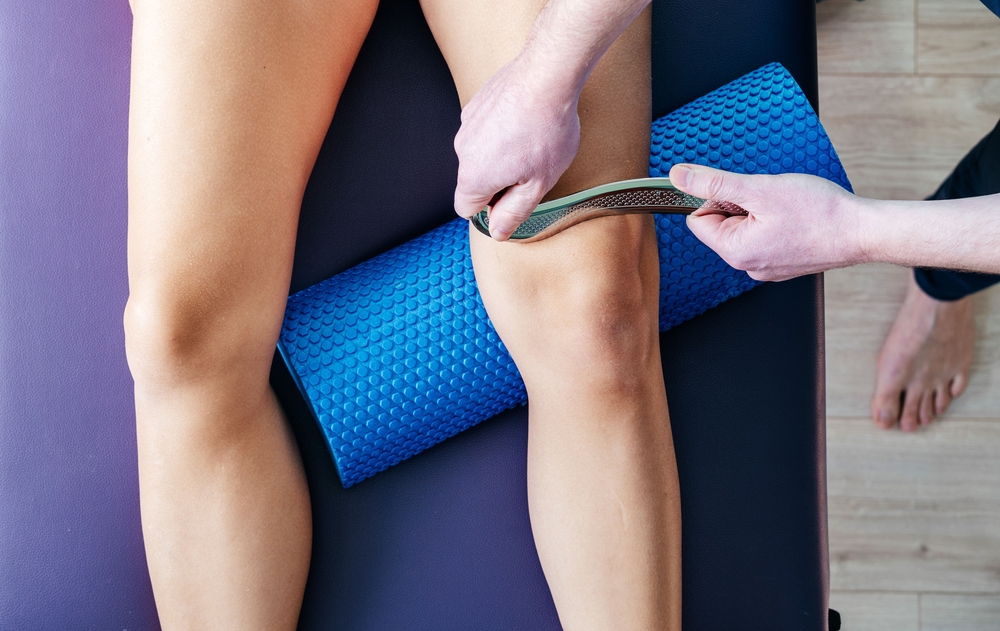What is Patellofemoral Syndrome(PFS)/Chondromalacia?

What is Patellofemoral Syndrome (PFS)?
Patellofemoral syndrome, also known as PFS or chondromalacia, is one of the most common causes of chronic knee pain. When caught early, this condition can be treated with simple, conservative measures such as rest, ice, compression, elevation, and over-the-counter pain relievers. As the condition worsens, however, patients may require more advanced forms of care. Before jumping into possible treatment options offered at OSR Physical Therapy, our specialists want to explain what PFS is, how it’s caused, and common signs/symptoms associated with the condition.
Causes of Patellofemoral Pain Syndrome
As we mentioned previously, PFS is a chronic pain condition that affects the knee. PFS is typically caused by an abnormality in the knee, specifically, the kneecap sliding over the lower end of the thigh bone. Other causes often include:
- Repetitive stress and overuse from running or sports puts added pressure on the knees.
- Muscle imbalances and weaknesses caused by poor form in the gym or improper mechanics while playing a sport.
- Trauma to the kneecap from a dislocation, fracture, or other injuries.
- Post-surgical complications can result in PFS, especially procedures that require the repair of the anterior cruciate ligament using the patient’s patellar tendon as a graft.
There are certain risk factors that can increase the likelihood of you developing PFS, such as your age, gender, and if you participate in a running or jumping sport. For example, the Mayo Clinic reports women are twice as likely to develop PFS as men and adolescents and young adults are more likely to develop this condition as well. As we mentioned earlier, patients who participate in running and jumping sports are also more likely to develop PFS.
Symptoms of Patellofemoral Pain Syndrome
Patellofemoral pain syndrome typically produces a dull, achy pain in the front of the knees. This pain may improve with conservative measures, but more often than not, the pain will return when the knee becomes aggravated. For example, patients may experience pain when they walk up or down the stairs, kneel, squat, or sit low with bended knees for long periods of time. Patients may also experience a catching or popping sensation while walking or moving the knee in any way.
How do you fix Patellofemoral Pain?
Patellofemoral pain syndrome may be alleviated through conservative measures, such as ice, rest, compression, elevation, and over-the-counter pain relievers. While these treatment options provide temporary relief, patients will likely need more advanced therapies to address discrepancies causing the patient’s chronic knee pain.
What are good exercises for Patellofemoral syndrome?
These underlying health problems may be best addressed through physical therapy. Performing strength-building exercises can help stabilize the knee joint and ensure the muscles around the knees are strong and supportive. Furthermore, adding stretches to a physical therapy routine for increased flexibility can help reduce the patient’s risk of developing a serious injury or further damage. A physical therapist at OSR Physical Therapy may also recommend supplemental therapies, like dry needling, taping, bracing, and massage therapy to increase blood flow to the damaged area.
How long does Patellofemoral syndrome take to heal?
If surgery is not needed, Patellofemoral syndrome can take between 4 to 6 weeks, depending on the individual. These techniques, in conjunction with physical therapy, can help patients experience relief from their knee pain sooner. If you suffer from PFS, call OSR Physical Therapy today to schedule an appointment. Our team of physical therapists is happy to provide much-needed care to patients suffering from patellofemoral syndrome (PFS) (chondromalacia). Visit an OSR location in Anthem, Phoenix, Peoria, Gilbert, Scottsdale, Sun City, Glendale & Moon Valley to discuss treatment options for PSF that are right for you.
The advice and information contained in this article are for educational purposes only and are not intended to replace or counter a physician’s advice or judgment. Please always consult your physician before taking any advice learned here or in any other educational medical material.

